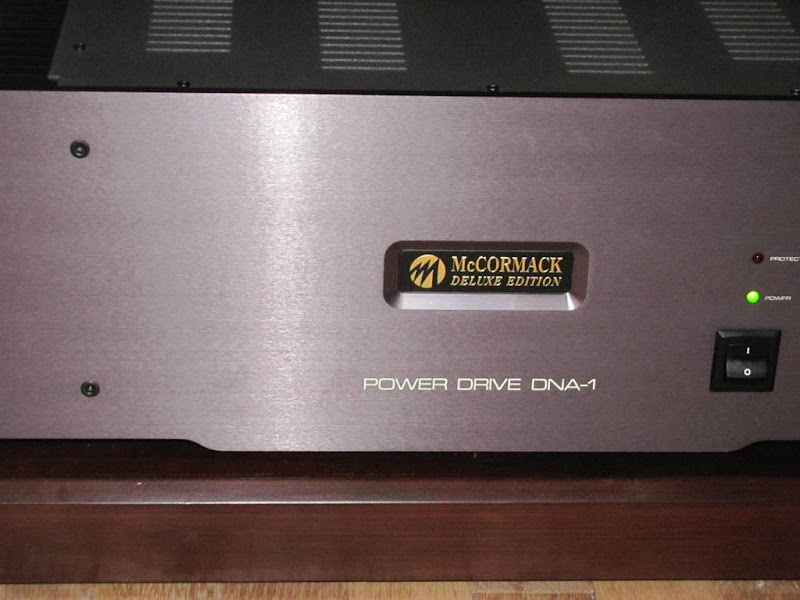The Sound… that glorious sound!
Well, I have spent a couple weeks now listening to the KEF R107’s after they have been repaired. I have to say that it’s been very interesting trying to assess the “sound” these speakers generate. Maybe the best place to start is to try to describe the atypical “British Sound”.
My impression of this sound is that it tends to be less dynamic than say the “California Sound” epitomized by such brands as JBL and Infinity. The British Sound tends to be focused less on presenting the “attack” of dynamics and more on maintaining a very flat response throughout the frequency range. Because this response is very balanced, some interpret this as a more laid back, smoother sound. Many refer to this as the “Polite British Sound” and some prefer it, while others feel it lacks charisma and vibrancy.
There are a number of venerable British brands that have made generating this sound a part of their DNA. But there is one brand that stands a bit higher above these because of their history developing many of the iconic drivers that are the cornerstone of this sound. Kent Engineering and Foundry (KEF) is indeed the most illustrious of these many keepers of the British Sound.
The R107 was at one time the Flagship speaker of this iconic company, and it is no wonder it is held in such high regard. Since this speaker was introduced in 1986 it is considered by many to be at the apex of innovative development from KEF. It is described, rightfully so, as a “Reference Speaker", which means that the standards to which it reproduces music is of the utmost accuracy. Accuracy is not everyone’s cup of tea, but accuracy is what the R107 does best.
My reference is a pair of DCM Timeframe TF700’s that the R107’s replaced. And to be fair, the two speakers are most certainly in different leagues. The DCM TF700’s are from a company that prided itself on developing a budget minded speaker that could compete with the best the 80’s had to offer. It was a Mirror Imaged Transmission Line Design that definitely adapted the best technology that was available to offer an affordable alternative to much more expensive systems. Consequently, maybe it is only fitting to provide some comparisons.
My listening sessions consisted of many Rock, Jazz and Acoustic cuts to try to get an overall feel for the system. In particular, I wanted to find sophisticated Bass oriented music to get a full appreciation of what many consider to be the single most important innovation from KEF; the Coupled-Cavity Bass Cabinet. I listened to the speakers in three various modes; Stereo Mode, Stereo Mode with the KEF 103.2 center channel and in Full Multi-Channel Stereo Mode with a pair of ADS L730’s providing surround support.
First off let’s get into the Bass. This speaker does not do “Boom”. If you are thinking that a speaker like this rattles walls and windows, it ain’t happening. OK, I’m sure if you cranked the volume way up, you would most certainly be rattling some windows. But this speaker is again, all about accuracy.
This speaker presents the separation and imaging of instruments in the bass octaves like many speakers can only attempt to image the high frequencies. With this system you hear the pluck of the bass guitar strings as they are being struck completely separate and unique from the thump of the Bass Drum. And what I have been really getting into is how it does the sizzle and deep echo of the snare drum with incredible accuracy.
And “deep echo” is perhaps an appropriate term, because what really sets these speakers apart from other systems that pretend to do bass, is not just the separation and imaging of those instruments, but it is the decay that it presents. It is a drawn out vibration or echo that is so realistic of what a bass guitar or drum would present, it is beyond description.
I believe when John Atkinson was describing how these speakers touched the soul of the individual, he was alluding to how that bass wave just reverberates not only within your ears, but within your entire body. It is truly one of those things you need to experience to fully understand. Not that other speakers can’t do this, but it’s just that these KEF’s do it so well!
So as I described before, this is not just “Polite British Bass”; it is bass that is separated very well and presented in incredible detail and smoothness. It has a ring or echo decay that just makes it seem so real. It isn’t in your face or incredibly forward, it is more coherent with the other frequencies, but man you know it’s there. It’s like another dimension that keeps drawing you into it to hear what it has to say! It adds a whole other level of detail to any music you think you’ve heard before!
As for the middle and upper frequencies, I’ve commented elsewhere in this thread about how the “heads” of these speakers are like highly engineered and phase aligned LS3/5a’s. Perched on top of that beautifully crafted bass cabinet, these heads present the upper reaches of any music with incredible clarity and smoothness. Not much more to say, other than you won’t find too many speakers that can match this level of accuracy.
As for imaging, my room doesn’t really do the KEF’s justice. I have them about 6’ apart and they really require something more like 8’ in my opinion to get the stage to really open up. So in standalone stereo mode they sound a bit “constrained”. As my first comparison, I found the TF700’s actually presented a little wider soundstage in the same relative speaker position. But that is where all comparisons end.
The R107’s provide a much deeper 3D stage and have better separation of individual instruments. The TF700’s can’t compare when it comes to clarity from the bottom end on up. They sound masked compared to the openness and effortlessness of the R107’s. As for the bass response, the TF700’s do pretty well. They obviously won’t hit 20Hz with anything like the control the KEF’s have, but they actually sound pretty smooth down low, even if they don’t have the separation and clarity.
But as I said, it isn’t really fair to compare these two speakers. DCM did an awesome job of crafting a Transmission Line speaker in a Mirror Imaged Alignment to provide a cost effective floor stander that could present music in a realistic and smooth manner. But when it comes to a TOTL Flagship from a venerable company like KEF, well as someone said, they don’t call it a “reference speaker” for nothing!
Now a word about multi-channel modes; I found the R107 to be musical and entertaining in standalone stereo mode, but maybe not over the top great. I will say that I’m a bit jaded having listened to these for so long in multi-channel mode. I thought that adding the KEF 103.2 Center Channel really opened up the sound. It added a sense of height given how I have my centers mounted. It also really brought out the dynamics up high and just overall strengthened the mid-range, which is understandable.
The thing that really works with this setup is these two speaker pairs are like siblings or stable mates. They were built in the same time frame of KEF history and both use a version of the T33 tweeter, so suffice it to say that the voicing is almost identical. They just fit together so seamlessly, that it really does provide a nicely unified “Wall of KEF” up front.
As for working with the ADS L730’s in Multi-channel surround mode, I’m struggling with that. The ADS’s just seem out of place to a degree. They tend to be a bit dynamic to mesh with the R107’s and they bring some brightness to the edge of the soundstage and therefore draw attention to themselves, which is NOT what I am looking for out on the edge of the stage. But I have a solution to this….. stay tuned!



 Nice room by the way!
Nice room by the way!


